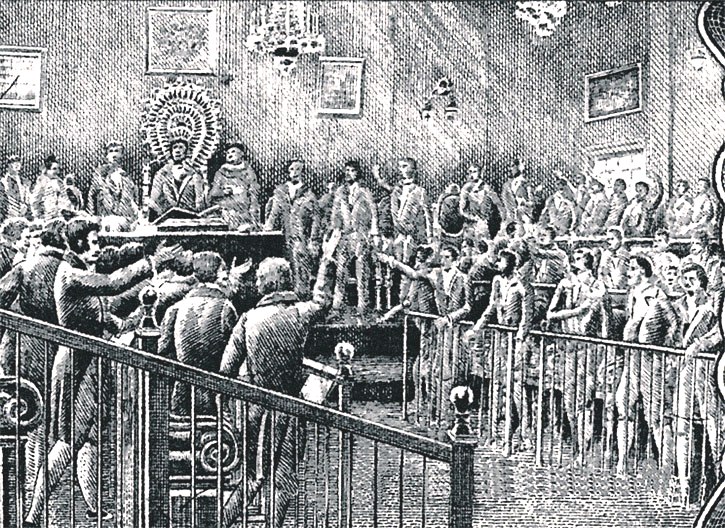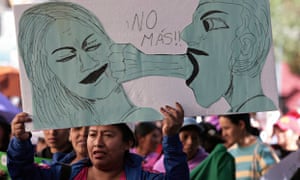Author: Yura Yokoyama
Edited by: Marissa Heuser, Leah Cohen, and Joseph Geidel
Indigenous people`s environmental protests are going on and being ignited all over the world in this capitalistic era. Bolivia, which is one of the poorest and naturally richest countries in Latin America, is also confronting the contradiction between protecting indigenous environmental rights and prioritizing its rapid economic progress. It seems that this contradiction pervades many aspects of the environment such as concessions of water, mining, and forest protection. In order to explicitly capture the big picture of environmental affairs happening in Bolivia, three cased were selected as follows; Cochabamba water war, Conamaq Indigenous movement, the TIPNIS protest.
Cochabamba Water War
The Cochabamba water war will probably be one of the famous protests by the local people. It happened in 1999 in Bolivia. The catalyst that fueled the local`s protest was Law 2029. Enacted by the government under president Banzer in 1999, this law was established to privatize water concessions in Bolivia. Various citizens, ranging from lower class to upper class, in Cochabamba joined the demonstration against the law because all of a sudden, they lost the right to manage their water. Water, that used to be public. Communities in Cochabamba had their own way of water management and distribution, so this law meant that the government disregarded their view of water as public good and indispensable communal property for their lives. Therefore, this incident is one of the most internationally well-known political events related to the exploitation of basic human rights conducted by government. The discussion about this protest is whether government can privatize publicly shared property such as water without considering the locals` needs and conventions. However, in 2009, Evo Morales banned the privatization of water on the ground that human rights include access to water. Therefore, due to his administration their situation was improved.
Conamaq Indigenous Movement
Responding the unequal exploitation, Conamaq Indigenous movement, which has actually been active since 1997, represents the negative side of the government under Evo Morales Nilda Rojas, who is the current Conamaq leader opposed the Mining Law. She strongly claimed, “The government has created a parallel organization because we don’t support their laws which are against Mother Earth and the Constitution”(Peralta, 2014). What she meant by a parallel organization is that the government kicked the Conamaq out of its office in La Paz in order that it could establish the new organization supporting the government called pro-MAS Conamaq that supported the government`s decision and adheres to the government. This unequal political incident shows the down side of the government. When it comes to the exploitative principle of the Mining Law, being supported by MAS (Movement Toward Socialism party) this law, in fact, is the cause of this indigenous environmental movement in Conamaq. Not only does this law grant the concession of the use of public water to members of the mining industry who are conducting water-intensive and toxic operation, for immoral reason it also deprives the rural communities in Conamaq of the access to the public water on the purpose of farming (Peralta 2014). Moreover, unequally, this law has the biding power to criminalize protest against this mining operation. Recently, in 2016, Evo Morales have proclaimed the increase of the government` control over the mining sector by changing the mining law. Bolivian government has already have 39% of all mining operations. continuing low oil prices and the increasing public works investments of the Morales government may alter the government’s approach to private and foreign investment, especially in the mining sector.(Hasfura 2016).
TIPNIS
Isiboro Sécure National Park and Indigenous Territory (TIPNIS) is home to more than 12,000 indigenous people; the Yuracaré people, the Trinitario-Mojeño people, and the Chimane people. The TIPNIS conflict has marked a historic victory of those lowland indigenous groups that marched against the construction of controversial highway that would gone across indigenous territory and national park, which is one of the most ecologically diverse areas in Bolivia. The road was supposed to be made on the purpose of improving transportation and distribution in order to proper economy. However, due to the sever protest, in 2011, Morales had no choice but to assign an agreement regarding the abolishment of the construction of the highway in order that he would not lose his credibility by indigenous people. Below is a short video clip of the TIPNIS marchers:
Summary Factoid Questions:
Q: What is the name of law which prospered the privatization of the public water in Cochabamba?
A: Law 2029
Q: What is a name of law that suffers people in Conamaq from the mining sector?
A: the mining law
Q: Why did the TIPNIS protest happen?
A: It is because the government tried to construct the highway running across ecological indigenous land.
Works Cited
Achtenberg, Emily. “Road Rage and Resistance: Bolivia’s TIPNIS Conflict”(2011), nacla. Web.22,2017.
Coleman, Thomas. “Who Owns the Water? An Analysis of Water Conflicts in Latin American and Modern Water Law,” intersections 12, no. 2 (2012): 1-19. Web 22 Feb, 2017.
COHA, “On Water Scarcity and the Right to Life: Bolivia”(2013), Council on Hemispheric Affairs. Web 22 Feb, 2017.
Hasfura, Astrid, “Bolivia’s new mining laws and the future of private investment” (2016), Global Risk Insights. Web 22 Feb, 2017.
Peralta M, Pablo. “Bolivia’s Conamaq Indigenous Movement: “We will not sell ourselves to any government or political party” (2014), UPSIDE DOWN WORLD. Web. 22 Feb, 2017.














